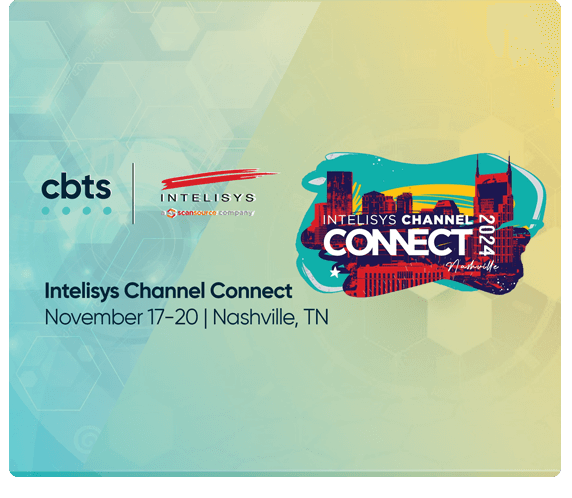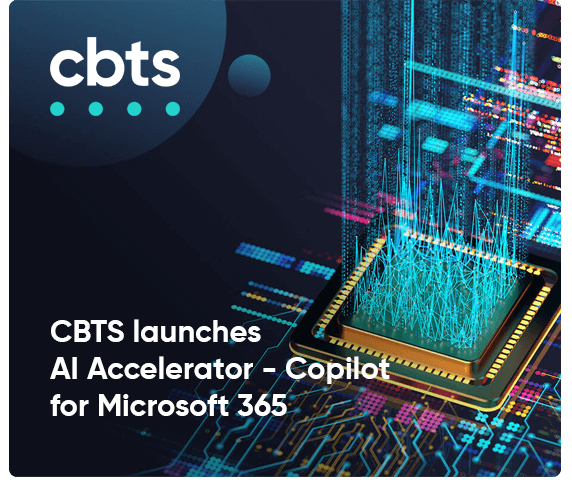
To compete in the digital age, enterprises need to modernize their IT ecosystems for agility, efficiency, and an improved customer experience. The application modernization process is a key component of digital transformation for business success. To continue adding value to a given industry, enterprises should plan to begin the process of modernizing legacy apps with the help of cloud-native development and deployment services.
If you’re confused about where to start or what the process entails, you’re not alone. You don’t need to modernize everything or do it all at once. By modernizing gradually, you’ll better understand how the process works and how it will benefit your company.
While application modernization may seem overwhelming, it doesn’t have to be. CBTS Application Services specializes in ensuring you have the tools that will help you succeed and developing an implementation strategy specific to your business needs.
Six steps to get started with the application modernization process
1. Assess applications for cloud-readiness
Start by identifying applications that have the most business relevance and applications that will benefit from better performance. In general, these apps are between 5-7 years old. Your application modernization candidates will require a detailed assessment to determine how best to meet your business needs.
Applications can be analyzed manually or using automation. Look for opportunities to update business logic into cloud frameworks such as microservices, serverless computing, and cloud-native services to help you meet performance and scalability needs. You also need to identify hard-coded connections to other systems and services, as these will need to be updated to conform to cloud standards.
By modernizing applications, you will harness the full benefits of the Cloud for:
- Agility: Allows businesses to stay responsive to customer needs.
- Flexibility: Makes innovating and scaling systems simpler than ever.
- Speed to market: Establishes a competitive advantage.
- Automation: Achieves more efficient business operations.
Also read: Supporting secure business solutions on the cloud
2. Focus on the user experience
User experience is top of mind for employers and business owners. Along with modernizing the technical aspects of applications, organizations also need to consider modernizing the user experience.
Today, we expect efficient and reliable digital experiences that deliver what we want, when we want it. Cloud-native applications are not only more reliable, but they are often more cost-effective.
You may find it helpful to gather user data and input so you can modernize with improved user experience in mind. Not only will it result in a superior product, demonstrating that their experience matters will result in greater loyalty to your company.
3. Validate your work with a proof of concept
Before building out a fully modernized solution, it’s good to check your work to ensure you’re getting the expected results. Do this with a proof of concept (PoC) early in the application modernization process.
A PoC lets you start with a minimalist approach that’s quick and cost effective. Furthermore, it will help you validate technical decisions, demonstrate functionality to stakeholders, and prove the modernized application is delivering the intended value. You only need to test the features and functionality needed to make a decision to move forward with application modernization, and you only need to build out the infrastructure needed to run the PoC.
4. Define the minimum viable product
Modern application development is an iterative process of continuous improvement and enhancement. To take advantage of the benefits of iterative development, define a minimum viable product (MVP), which is the simplest version of your application that will provide value to the company and users. With user feedback, you can revise the MVP to perfect the application. Then, you can iteratively add features and functionality to enhance and extend the usefulness and profitability of the application.
By spending less time building, you can release your MVP into the market sooner, which results in early user feedback, more revenue, and maybe even more market share.
Also read: The methods and motivations behind application modernization efforts
5. Build or optimize cloud infrastructure
You’ll need to modify your existing infrastructure to support the application modernization process. Start by defining the development environment. Then, build out the test and production environments as development matures. When possible, use infrastructure as code to define the infrastructure. This will enable you to automate provisioning, saving your developers quality time for development work.
6. Automate as much as possible
Automation is a key part of application modernization. By automating applications, systems, and processes, companies can sustainably manage modernized applications at scale.
Employ automation wherever possible. Automate testing to ensure that modernized features are the same as before modernization, including application features, configuration, and infrastructure. If containers are part of your modernization strategy, consider automating tasks such as container deployment, scaling, and networking. And don’t forget to automate provisioning and backup.
Read more: Revamp your business with the Red Hat Ansible Automation Platform
Conclusion: Modernize your applications to gain a competitive edge
Modernizing applications creates new opportunities to streamline software development and implement continuous improvement throughout an application’s lifecycle, giving organizations the ability to respond to changes quickly.
You can speed up your time to success by drawing on outside expertise—a partner that has worked through and solved nearly every common misstep associated with application modernization.
By enlisting CBTS to guide you through the application modernization process, you can ensure technology isn’t holding you back from business success. CBTS has a proven track record for aligning business objectives with the right cloud technologies and can provide expert advice on which applications are the best candidates for modernization and migration to the Cloud.
For more information on how CBTS can assist your organization at critical points in the application modernization journey, contact us today.




















